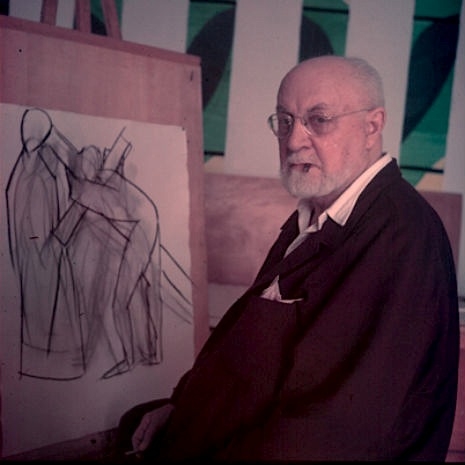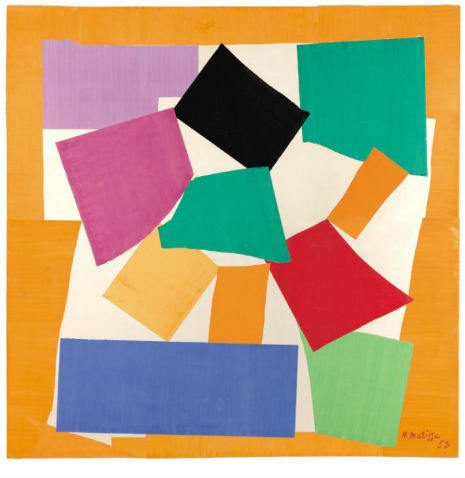
Henri Matisse didn’t need the revolutionary gesture, he believed in art for art’s sake.
Matisse lived through a century of tumultuous change, but none of it had any effect on his work. Unlike Picasso, who compared himself to matadors and minotaurs, and sought public and political endorsement, Matisse believed in the bourgeois values he had inherited from his childhood in his hometown of Le Cateau-Cambrésis and believed art was best appreciated by the middle class.
Matisse was right. His once shocking painting “La Danse”, or his series of gouaches “Blue Nude”, or his collage “Jazz”, now decorate the walls, place mats, and drink coasters of many a middle class home. His art is valued and loved, while “revolutionary” works by Picasso, like “Les Demoiselles d’Avignon” or “Guernica” are sold at museums as postcards, rather than prints for the dining room wall.
Matisse believed art should be “soothing”
“What I dream of is an art of balance, of purity and serenity devoid of troubling or depressing subject matter—a soothing, calming influence on the mind, rather like a good armchair which provides relaxation from physical fatigue.”
This is not to say Matisse was safe. His paintings were and are still revolutionary in their design, approach and use of color. Moreover, in his final years Matisse produced some of his greatest work - dazzling collages made from cut-out colored paper.
“With color one obtains an energy that seems to stem from witchcraft.”

It was illness rather than witchcraft that played a key role in Matisse’s development as an artist. He first started painting at the age of twenty, whilst recovering from appendicitis.
“From the moment I held the box of colors in my hand, I knew this was my life.”
In 1941, the greatest creative period in Matisse’s career began when he was told that he was dying. He had stomach cancer and was not expected to live. After an operation to remove tumors from his intestines, Matisse struggled through long months of agonizing pain, and surprised the doctors, and nuns who attended him, by surviving against all the odds.
“In those little moments of calm, between two pangs, I imagined the inside of a tomb: a little space, completely enclosed, with no doors. And I told myself, ‘No, I prefer still being around even if it does mean suffering!’”
Matisse believed he did not have long to live (in fact he lived longer than either he or his medics thought), so he worked with a passion and intensity to make the most of this “second life.”
“It’s like being given a second life, which unfortunately can’t be a long one.”
He began to experiment by cutting up painted paper into collages to make startlingly original pictures. He was creating a new language of art that placed him above his rival Picasso.
The most comprehensive exhibition of Henri Matisse’s “cut-outs” opens at the Tate Modern, London, from April 14th until September 7th, 2014.
Art critic Alastair Sooke examines Matisse’s life, art and influence on our world, explaining how Matisse’s work has shaped much of our aesthetics—from color schemes, to fabrics, furniture and design.
Henri Matisse at Tate Modern.
Bonus: Hear Henri Matisse speak!